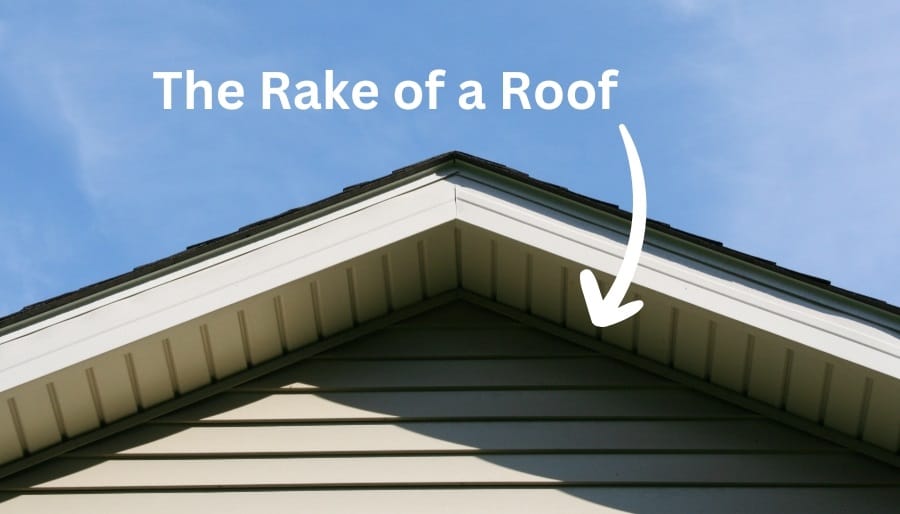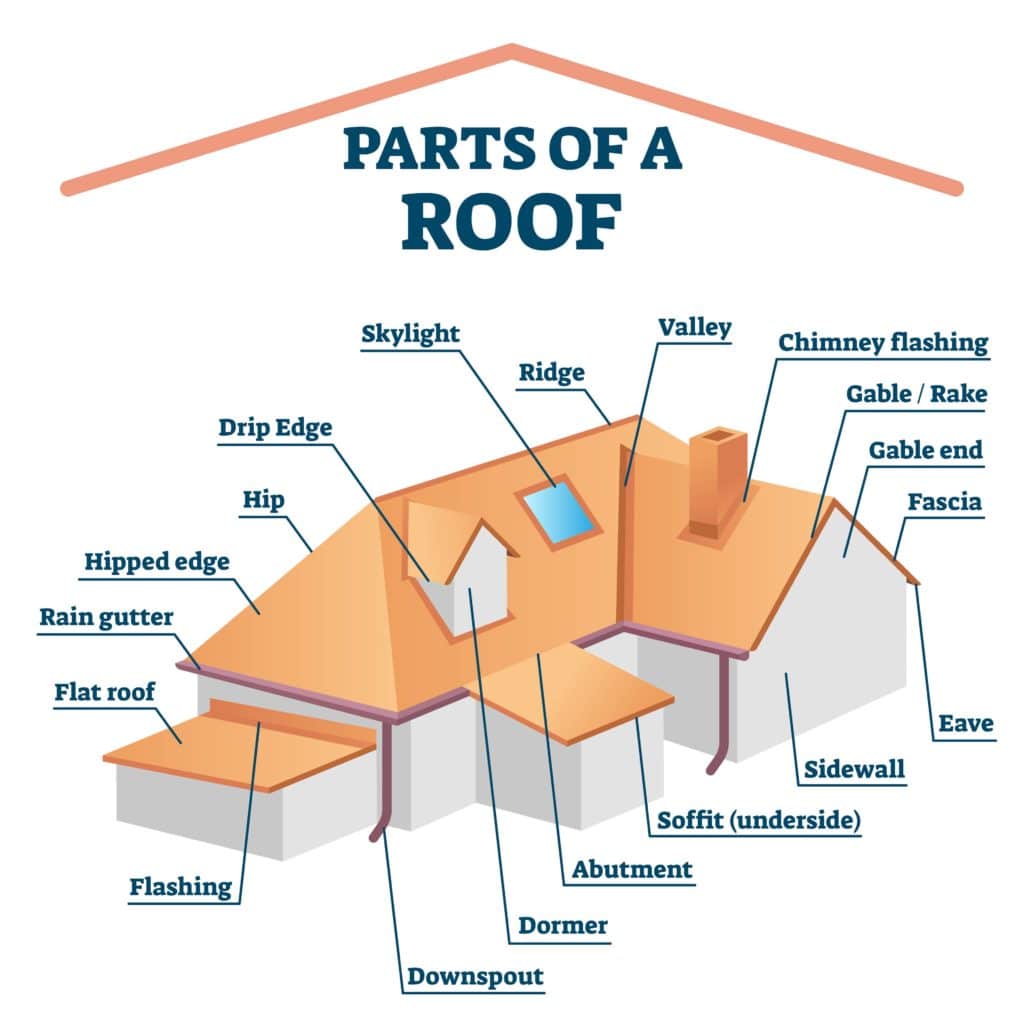[Guide] Roof Rake: Definition, Types, Materials & Maintenance
Ever considered the unsung hero of your home's rooftop architecture? The roof rake, often overlooked, plays a critical role in both the functionality and aesthetic appeal of a gabled roof, and understanding its nuances is key to responsible homeownership.
The term "rake" in roofing refers to the sloped edge of a gable roof that extends from the eave (the horizontal edge) to the ridge (the peak). It's the exposed portion you see sloping down on either side of a gabled roofline the triangular part of many homes. This seemingly simple element is more than just a design feature; it's a crucial component in protecting your home from the elements. Understanding the different types, materials, and maintenance requirements of roof rakes can save homeowners from costly repairs and extend the life of their roofs. Lets dig deeper into this essential aspect of home construction.
The definition and significance of the rake on a roof is crucial for homeowners and roofing professionals alike. This structural component, which extends from the edge of a pitched roof, creating an overhang or projection, serves both functional and aesthetic purposes. It helps to protect the buildings exterior walls and windows from the elements while contributing to the overall architectural style of the home. The rake serves to direct water off the roof and provides an overhang that protects siding or walls at gable ends from water damage.
- Diva Flawless Rising Star Biography Music Find Out Now
- Anne Burrell Stuart Claxton Married Wedding Photos Love Story Revealed
Roof rakes come in two main types. The rake can be flat with no overhang, or it can overhang the gable end like an eave. The overhanging rake then is closed in with soffit and fascia or left open. For instance, if you desire a generous, sheltering roof, an overhanging rake detail is appropriate. If you prefer a roof in which the planes of the roof and the walls fold together to form a taut geometry, a clipped rake is the best choice.
A roof rake board, sometimes called a verge board or barge board, is a trim board that runs along the slanted edge of a gable roof (the part where the roof slope meets the wall). These boards are installed at a perpendicular angle to the roof slope, offering a neat and finished edge while adding to the roofs curb appeal. The rake is often finished with fascia boards, trim, or rake edge flashing for an aesthetic look. With the exposed roof rakes, the exposed portion will match the eave.
While they all serve the same purpose, roof rakes come in different forms. The rake can be flat with no overhang, or it can overhang the gable end like an eave. Sometimes, this is called the ridge. The rake has an important role. It keeps the property safe from the elements, like rain and snow.
- Speaker Biwiring What It Is How It Improves Sound Quality
- Anne Burrell Husband Net Worth Wedding Details You Need To Know
Here's a breakdown of what you need to know:
Parts of a Roof Rake
- Rake Board: A trim board resembling a fascia board, but specifically covering the exposed area of the roof's gable end.
- Fascia: The horizontal, typically wooden board that runs along the lower edge of the roof, where the roof meets the exterior walls.
- Soffit: The underside of the roof overhang, often closed in for aesthetic and protective purposes.
- Flashing: Metal strips used to seal joints and prevent water from penetrating the roof structure, especially at the rake edges.
Materials Used for Roof Rakes
Understanding the definition and importance of a rake on a roof helps homeowners and roofing professionals alike appreciate the significance of this component. Additionally, being familiar with the common materials used for rakes, such as wood, metal, vinyl, fiber cement, and pvc, allows for informed decisions when it comes to installation and. The type of material that the rake on your roof is made from can differ depending on budget and quality. The most common materials that are used when making rake boards are wood (pine or cedar), pvc, or concrete.
- Wood: Traditional and aesthetically pleasing, but requires regular maintenance (painting, sealing) to prevent rot.
- Metal: Durable and often used in conjunction with metal roofing. It's resistant to weather and pests.
- Vinyl: Low-maintenance, durable, and comes in various colors.
- Fiber Cement: Offers excellent durability and resistance to fire, insects, and rot.
- PVC: Similar to vinyl, PVC is a low-maintenance and long-lasting option.
Common Problems and Maintenance Tips
Regular inspection and maintenance are essential to ensure the longevity and effectiveness of your roof rake. Common problems include:
- Water Damage: Leaks can occur due to improperly installed flashing or damaged boards.
- Rot: Wood rakes are susceptible to rot, especially in areas with high humidity or exposure to moisture.
- Pest Infestation: Insects like termites can damage wood rakes.
- Wind Damage: Strong winds can damage or detach rake boards.
Maintenance Tips:
- Regular Inspections: Inspect your roof rake at least twice a year, and after any severe weather events.
- Cleaning: Remove debris (leaves, branches) that can accumulate on the rake and lead to water damage.
- Sealing/Painting: For wood rakes, ensure the paint or sealant is in good condition to protect against moisture.
- Repair or Replacement: Address any signs of damage promptly. Replace damaged boards and ensure proper flashing.
- Professional Inspection: Consider a professional roof inspection every few years to catch any issues early on.
Styling a Roof's Rake
There are various materials and designs available to style the rake on a roof. It's crucial to be informed about its parts. The rake detail should be compatible with the eave detail (the roofs horizontal edge). Typically, the rake will complement the roofs style. So, if you have a metal roof, the rake may be clad with metal to match. Extended rakes are wider and overhanging, often with more intricate soffits.
The Importance of the Rake
The rake on your roof is made from boards that can be cut from different kinds of material. The rake serves to direct water off the roof and provides an overhang that protects siding or walls at gable ends from water damage. Understanding roofing terminology can be crucial whether youre planning a new roof or just curious about home maintenance. Among the many terms, the rake of a roof is one that often comes.
In essence, the roof rake is an integral part of a roof system that deserves attention. By understanding its role, maintaining it properly, and choosing appropriate materials, homeowners can safeguard their investment and protect their homes from the elements.
Understanding the roof rake's importance is crucial for homeowners and roofing professionals. It impacts both the aesthetics and structural integrity of your home. The rake serves to direct water off the roof and provides an overhang that protects siding or walls at gable ends from water damage. The rake is often finished with fascia boards, trim, or rake edge flashing for an aesthetic look.
The rake of a roof is the exposed area of a gabled roof, usually extending from an eave to the ridge of the roof where the roof slopes. The rake on your roof is made from boards that can be cut from different kinds of material. The type of material that the rake on your roof is made from can differ depending on budget and quality.



Detail Author:
- Name : Prof. Ambrose Kulas I
- Username : xschuster
- Email : white.saul@hill.com
- Birthdate : 2002-05-09
- Address : 62225 Reilly Place West Jack, WY 34816
- Phone : 801.417.5152
- Company : Mayer-Lebsack
- Job : Orthotist OR Prosthetist
- Bio : Aut saepe ratione voluptatibus non. Ut ipsa voluptatem pariatur sit. Quasi tenetur dicta officia reiciendis quaerat doloremque. Voluptatem et labore animi a natus. Tempore molestiae illum nihil.
Socials
linkedin:
- url : https://linkedin.com/in/barbara2920
- username : barbara2920
- bio : Ducimus et corporis aut.
- followers : 6949
- following : 608
instagram:
- url : https://instagram.com/bhoppe
- username : bhoppe
- bio : Tenetur alias atque id quis rerum. Commodi vero est temporibus dicta aut temporibus.
- followers : 6525
- following : 2502